Transport Aviation Protection Systems
C-music is a complete solution for aircraft self-defense. In the photo under the fuselage of the B707 aircraft, the Elisra Paws missile launch warning system and the J-Music guidance system for infrared guidance systems are installed in the aerodynamic pylon.
In the weeks preceding the start of air operations in Libya, a number of NATO countries (Germany, Britain and Italy) reportedly sent their Transall C-160 and C-130J aircraft to perform complex tasks on Libyan territory. They landed on runways and airfields near oil fields to evacuate local and foreign citizens and workers. British and Italian C-130J (Italian landed at Sabha airport about 640 km south of Tripoli) flew without threat detection systems in a rapidly escalating combat situation, characterized by the presence of various radar surveillance radars and the threat of using electromagnetic and infrared guided missiles.
Among the weapons that became ownerless during the Libyan conflict were the latest and very effective man-portable missiles, namely the SA-18 Igla and the SA-24 Igla-S. They became the main target of reconstruction operations conducted by US and NATO forces at the final stage of the conflict, since an unknown number of these missiles were stolen in Libya and went to the illegal market, which supplies terrorist organizations and paramilitaries. The Libyan crisis was the last of a series of conflicts (starting with the Balkan Wars) in which the transport aviation was forced to work in enclaves surrounded by hostile forces and in the immediate area of radar and weapons infrared-guided. In such conditions, the level of threat remained very high, not only for military, but also for civilian aircraft.
Since the last years of the Soviet era and to this day, man-portable air defense missile systems (MANPADS) have gone through four generations:
• Russian CA-7A Strela-2 and CA-7B Strela-2M, Chinese HN-5A, Pakistani Anza Mk1 and American FIM-43 Redeye (Block II has a gas-cooled homing head (GOS) that puts it in between its number, there will be a good number from a number, in that there will be a good number to the number of a figure, they will have a numer of their number, they will have a numeric zone, they will have a numer- 1 generations) belong to the first generation of missiles equipped with uncooled ghosts (homing head), which are characterized by a rotating rectangular field of view with a single detector, which leads to a decrease in accuracy when approaching the target or when shooting after, not to mention their vulnerability to infrared (IR) traps (false targets ).
• FIM-92A Stinger Basic, Strela-2M / A, CA-14 Strela-3, Chinese HN-5B, QW-1, FN-6, Pakistani Anza Mk II and Iranian Misagh-1 are a second-generation weapon with a cooled detector that has a cooled detector and a cooled detector. search for targets with conical scanning, which excludes the aforementioned decrease in accuracy. They are distinguished by their full range of capabilities, some resistance to infrared traps and have a relatively high probability of hitting with one shot.
• The third generation of missiles, which include the American FIM-92B / C / E Stinger Post / RMP / Block I, Russian CA-16 Needle-1, CA-18 Needle and CA-24 Needle-S, Polish Thunder-1 / 2 , Chinese QW-11 / 18 / 2, FN-16, Pakistani Anza Mk III and Iranian Misagh-2 along with the (then) Matra Mistral 1 and 2 systems, it features a cooled detector with two IR channels or infrared and ultraviolet (IR / IR) UV channels with a rosette scanning in a very narrow field of view (quasi-visualization), which provides all-perspective capture, high resistance to IR traps, the best resolving ability under poor conditions of recognition and a high probability of destruction from the first start.
• The fourth generation includes the Japanese Kin-SAM Type 91 rocket and the Chinese QW-4, which are equipped with a full-color IR-GOS, featuring very high IR-trap resistance and false targets. Rockets directed by targeting commands or beam, for example Blowpipe, Javelin and Starburst, belong to a different league.
To protect a low-speed tactical and strategic transport aircraft that produces a strong thermal signature and has a large effective reflection area, a typical radio-electronic suppression system of the beginning of 90-s could include a radar warning receiver RWR (radar warning receiver), a passive ultraviolet missile attack warning system MWS (missile warning system) and automatic dropping of dipole reflectors and infrared traps CMDS (countermeasures (chaff / flare) dispensing system), although some platforms modified for carrying out various tasks the special forces, search and rescue, operational management, psychological problems and information gathering, equipped with more reliable components EW (electronic warfare). However, the emergence of a new generation of weapons revealed the need for improved protection complexes, ranging from advanced MWS, new false targets, methods of dropping them and ending with a stationary, and later directed anti-IR guidance systems, now known as Dircm (Directional Infra- Red Countermeasures).
The Airbus A400M strategic transport aircraft is equipped with a basic protection package, including the Indra ALR400M RWR / ESM radar warning receiver, the Thales and Cassidian IR Miras missile attack warning systems, and the Saphir 400 IR traps MBDA dropping device.
To disrupt the attack of an anti-aircraft missile and divert it from the target, IR traps (thermal false targets) have been used as countermeasures for almost half a century. IR traps are available in a variety of shapes and sizes, with different functions, they are designed to create a more “attractive” IR signature compared to the IR signature of the target. They can also be used to interfere with a threat by saturating its computational or identification electronics. To create the necessary infrared radiation, a source of chemical energy (pyrotechnic or pyrophoric) is used. The main reactive pyrotechnic cartridge continues to be the traditional trap based on magnesium-Teflon-Viton (MTV). For the first time it was applied in Vietnam, since then its characteristics and safety have constantly increased.
The appearance of double-spectrum traps, however, has led to the appearance of homing missiles capable of distinguishing the intensity of radiation and, as a consequence, recognizing and not accepting standard MTV traps. To counteract the new IR-GOS missiles were developed "movable" IR-traps. The new HOS work in a special mode, which allows them to distinguish relatively proportional movement of the “target” during moving flight and movement of standard MTV traps, which, as a rule, fall freely when dropped from an aircraft. In addition to spatial (as opposed to a point source) and ballistic modified false targets, hidden traps are pyrophoric (using metal foil that reacts with air and burns). Their advantage is that they are virtually invisible to the naked eye and allow the aircraft not to reveal its position, as is the case with MTV traps. Their disadvantage is that they are mainly suitable for preemptive discharge, which requires the loading of additional jet movable traps into the aircraft for complex protection. Specialized companies, such as Alloy Surfaces, Armtec Defense, Chemring Countermeasures, Etienne Lacroix, IMI, Kilgore Flares, Rheinmetall Waffe Munitions and Wallop Defense Systems, have developed a number of kinematic, movable, with an adapted spectrum and traps distributed in space. To combat the 2-hs and 3-hs generation, these traps can be dumped in various combinations and according to different schemes by the “intelligent” CMDS systems created by ATK, BAE Systems, Kanfit, MBDA, Meggit Defense Systems, MES, Saab Electronic Defense Systems , Symetrics Industries, Terma and Thales.
AAR-47B (V) 2 is the latest model of the ATK warning system from the company ATK with the ability to display enemy fire. Designed to protect airplanes and helicopters from IR-guided missiles, laser targeting threats, small arms and grenades
Modern passive warning systems are able to detect ultraviolet and infrared radiation from a rocket exhaust jet. Northrop Grumman and ATK, respectively, supply their AAR-54 and AAR-47 systems for aircraft in service with the armed forces of the United States and other countries. On the other side of the ocean, Elisra Electronic Systems, Cassidian and Saab Electronic Defense Systems are renowned system suppliers. Elisra supplies the passive missile warning system Paws (Passive Missile Approach Warning System) with IR matrix and Paws 2 with two-color IR matrix, while Cassidian offers AAR-60 Milds warning system and Saab UV system under the designation Maw-300 .
DIRCM systems are gaining popularity
The emergence of new infrared homing missiles, immune to infrared traps, has accelerated the transition to more efficient Dircm laser systems that can fight all known and still designed missiles with infrared guidance. The cost, maintenance and reliability of these systems have limited their application in the past, but as laser technology improves and further miniaturizes, as well as with the increased sophistication of threats, larger fleets of transport and special air platforms are now ready to accept Dircm systems.
The AAQ-24 (V) Laircm system (Large Aircraft IR Countermeasures - IR countermeasures for large aircraft) manufactured by Northrop Grumman is a modification of the earlier AAQ-24 Nemesis model. Prior to 2011, it had developed over one million flight hours in the American and Allied contingents, most of them during deployment and in combat conditions with an operational readiness level in excess of 99%. Based on an open system, the modular and highly reliable Laircm complex consists of Northrop Grumman UV warning system AAR-54, several silencing turrets (stations), a laser transmitter unit, a control interface, signal processing processors to detect tracking infrared missiles.
The number of sensors (up to six) and turrets (up to three) per ship is determined by the size and signature of the aircraft. Initially, the system was installed on the C-17, later it was installed on the C-130, C-5 and new C-130Js, including the AC / EC / MC-130J. The Laircm is also being installed on the US Navy's C-40A Clipper transport aircraft, and is also selected for the P8A Poseidon ASW / ASuW and KC46A tankers. It is being tested on the outdated KC135, but here the system is based on separate, easily removable nacelles that carry all the electronic equipment to control the AAR-54 MWS warning system and a single laser emitter station. The Laircm is also being installed aboard the British C-17, Tristar and Airbus A330 Voyageur tankers, and has recently been ordered for the new Airbus A400M transports of the British Air Force. Under intergovernmental agreements, Australia and Canada have chosen and are installing the Laircm complex on board their C-130, C-17 aircraft and on the B737 Wedgetail AEW & C AWACS aircraft. This system is also installed on NATO's E3B Awacs early warning and warning aircraft.
Northrop Grumman's Laircm complex gradually migrates from the small laser transmitter turret (SLTA) to the GLTA (Guardian Laser Tramsitter Assembly) jamming head of reduced size and weight, while the AAR-54 UV detection device is being replaced by a two-color (two-band) missile warning infrared warning system next generation attack
AAQ-24 (V) Laircm from Northrop Grumman is based on an open architecture. A typical kit weighing just over 90 kg includes a five-touch warning system AAR-54, two jamming turrets, control and calculation blocks
The system for the Air Force Laircm Stage I entered service in 2005 year. Her jamming station is called a Small Laser Transmitter SLTA (Small Laser Transmitter Assembly). It has a colorless, eye-safe, Viper diode-pumped multiband semiconductor laser, developed by Fibertek, which operates in all three segments of the IR range used by heat-guided missiles. The Laircm Stage II program created a lighter and smaller silencing turret called the Guardian Laser Transmitter Assembly (GLTA), which Northrop Grumman began supplying the Air Force at the end of 2008, along with the NexGen MWS rocket attack warning system. Selex ES (formerly Selex Galileo) manufactured all tracking and jamming towers in the UK for Nemesis and Laircm as a key supplier for Northrop Grumman. The latter continues to manufacture SLTA and GLTA, based on customer needs, while the USAF gradually replaces the SLTA with GLTA on a number of platforms, including the C-17. For the new program on the MC-130J aircraft, the special forces of the US Air Force are supplied with turrets in a “recessed configuration”, GLTA laser transmitters and NexGen MWS missile detection systems. In May, 2012, the Air Force, approved mass production of a new two-color IR MWS warning system to replace the original AAR-54 based on a UV sensor. In accordance with the documentation of the Ministry of Defense, the NexGen MWS system offers an increased probability of detecting existing missiles, a low false response rate and detection at long distances. In addition, when loading special software, it can be used to improve crew situational awareness, providing a complete all-round visibility in the IR spectrum.
In accordance with a joint agreement signed in 2007 between Elbit Systems and Elettronica to jointly develop the Music Dircm family of systems based on a fiber optic laser designed to protect civilian and military aircraft and helicopters, Elettronica is working on a twin turret set ELT / 572 for the Italian Armaments Board on a three-year contract worth 25,4 million euros, issued in December 2010 of the year and providing for system development, ground and flight tests and certification. The twin turret kit must be installed on tactical transports (C-130J, C-27J) in operation, on new AW101 search and rescue helicopters, although the following requirement already exists for installing different system configurations on B767A tankers and other transport aircraft.
After Elettronica carried out successful laboratory tests and the Italian Air Force conducted tests on a helicopter platform in a single turret against emulated and real IR-GOS, ground and flight tests of the system integrated with the Milds UV system (AAR-60) MWS from Cassidian began. The latter systems are already in use on Italian transport aircraft and helicopters. The final configuration with a twin turret / MWS will be tested in the second half of the year in order to complete the system qualification by the end of 2013. The deliveries of the first five sets are scheduled for the beginning of 2015 of the year, after which contracts for the supply of subsequent systems will be concluded.
The ELT / 572 system weighs 45 kg, including a silencing turret, a laser generator and processor units. It is based on a fiber-optic laser operating at different infrared frequencies and provides an interference-signal ratio greater than one. According to Elettronica, the system is “ready for export”, it is not related to the International Trade in Arms (ITAR) rules, and it also allows the user to download their own libraries of laser jamming codes. The system has already attracted the attention of European and Middle Eastern countries and was successfully tested in July 2012 on the test bench WTD52 according to the program of the German Defense Ministry.
Elettronica has developed and integrated the ELT-572 Dircm laser system with a dual turret configuration on various platforms. In 2013, the system is being tested and tested. ELT-572 is based on the Elettronica and Elop jointly developed Music system, it will be installed on Italian airplanes and helicopters
The J-Music system from Elbit Elop in a single or dual head differs in a distributed configuration and is designed for large aircraft. It is based on a highly mobile head with spherical mirrors (as opposed to the Music system facet head). J-Music is ready for installation on Embraer KC-390
Elbit Elops is market-promoting the Music Dircm family of compact and lightweight systems on a fiber-optic laser, which has already successfully established itself in Israel and in other countries, especially on Indian military helicopters AgustaWestland AW101. In addition to the Music solution designed to protect helicopters, small and medium-sized turboprop aircraft, Elbit offers J-Music and C-Music systems. Based on a later high-mobility mirror head (instead of the Music facet head), the J-Music system has a distributed configuration (with a single or double turret) and is designed to protect large vessels, such as heavy transports, tankers, and jet business aircraft. She has already been selected for the Brazilian program on the Embraer KC-390 tactical transport aircraft. C-Music is a comprehensive self-defense system based on an aerodynamic gondola and including the Elbit Paws infrared warning system and J-Music Dircm with a total weight of 160 kg. C-Music is specially created for civil and large passenger aircraft and, as a result, complies with commercial aviation certification standards; she was chosen by the Israeli government for her civilian aircraft. According to Elbit, the C-Music system passed a series of successful flight tests aboard the B707 in January 2012, and according to other sources, its operational tests were recently completed on an unidentified Heyl Ha'Avir platform. Such activity began after the launch of the SA-7 Rocket Arrow on an Israeli military aircraft flying over Gaza in October 2012. After this incident, serious concerns were expressed about the possibility of arms supplies from Libya after the fall of the Gaddafi regime in 2011.
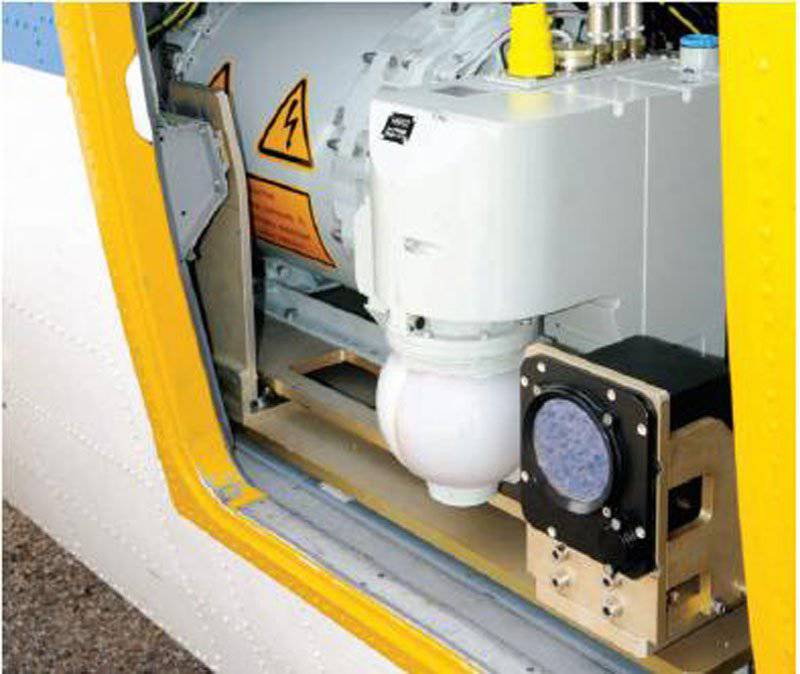
Indra's Dircm multispectral multiband Manta system (MANpads Threat Avoidance) uses a relatively large but powerful Russian-made chemical laser. Work is also continuing on a more compact version.
Ten years ago, the Spanish company Indra decided to launch the Manta project (Manpads Threat Avoidance - Avoiding the Threat of MANPADS) in order to supplement the self-defense complex of military transport aviation with the Dircm system. To date, Manta has been approved by the Spanish Airworthiness Control Agency after a tense process, which confirmed its technological maturity, readiness and compatibility with the widely used Cassidian AAR-60 Milds system. She demonstrated her qualities during the NATO Embow exercises in France in September 2011 and in other international tests in 2012. The Manta laser multispectral multiband protection system was developed by Russian Rosoboronexport (or rather, FSUE “Ekran” Research Institute, approx. Lane), it uses a relatively large, but powerful chemical laser supplied by Russian industry, which allows the system to have a feedback loop (obtained in flight information is used to select the optimal modulation), classify infrared and non-infrared guided missiles, and perform jamming with a high probability of success due to a common optical channel for hedgehog and jamming, the ability to repel attacks of several threats, as well as an instant assessment of the effectiveness of countermeasures. The Manta system, capable of dealing with 1-th and 2-generation hfs, is offered in the following configurations: installation inside an aircraft, in a gondola and in sponsons. Since the system was once designed for large and medium-sized platforms, Indra is currently working on a compact version for lighter platforms, but it is also launching an initial version for protecting large aircraft, such as the A400M. The Manta system was supposed to be installed on Spanish A310 VIP and C295 aircraft, and later on A400M, but budget cuts prevented these plans.
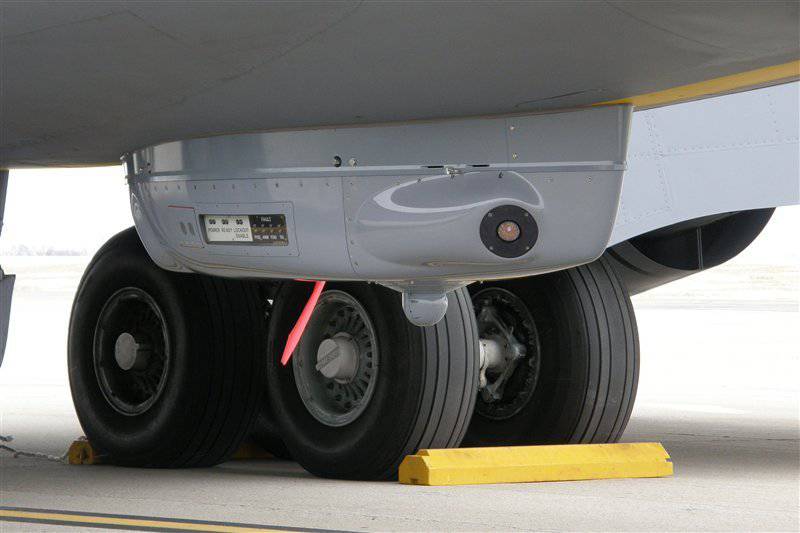
Guardian Dircm from Northrop Grumman is located in an autonomous easily removable gondola. The system is designed for civil and military use. This system has been tested by the US government to protect national airline aircraft.
Having adopted the experience gained in the design and manufacture of high-performance aviation lasers and optical-electronic stabilization and guidance systems, Selex ES presented its new Dircm solution at IDEX 2013.
The new solution, called Miysis (the ancient Egyptian god of war with a lion's head), is a new generation system based on the development of a lightweight and inexpensive Eclipse IR pointer / tracking device and a Type 160 diode-pumped fiber laser from this company. The hardware and software components of the system are ready for export. Eclipse and Type 160 were chosen by the British Defense Ministry in March 2010 as part of a program on the Common Security Defenders Aid Suite technology demonstrator, which aims to refine the architecture of an advanced protective equipment system. The Misys Dircm suite is available for integration either as a subsystem or as a separate protection system, which in turn comes with distributed components or in a special gondola container. The Misys Dircm kit has a mass of less than 50 kg and includes two sensor towers, an MWS kit with five sensor heads, an electronic display unit in the cabin and a control unit. The Misys suite is suitable for a variety of applications, from light aircraft and UAVs to large transport aircraft, it consumes less than 500 Watts, and its open architecture integrates it with several warning systems, including the latest Cassidian and Maw60 options from Saab . According to the Selex documentation, two sensor towers and an MWS kit are sufficiently effective to protect a platform such as, for example, A300M. The company Selex ES notes that it is quite successfully negotiating with the first customer, and also discusses its possible participation in the Misys program with the company Northop Grumman.
Miysis is based on the development of the Eclipse pointer and the Type 160 IRCM IR laser. This system was shown at IDEX2013. According to SelexES, the system is ready for export in all respects. An experienced Miysis gondola is expected to pass flight tests in the 2014 year.
From the very beginning of the multinational program for the strategic transport aircraft Airbus A400M, the countries of the international consortium worked on a comprehensive system of basic protection, fearing the threat of a new-generation anti-aircraft missile systems. The system should include the Indra ALR400M RWR / ESM radar detector, Miras (Multicolour Infrared Alerting Sensor - a multi-color infrared warning sensor) from Thales and Cassidian, the Saphir 400 CMDS countermeasure from MBDA, the Dircm system and the system control unit. Indra's ALR400M is the most advanced version of the ALR400 RWR / ESM family (Radar Warning Receiver - Radar Exposure Receiver / Electronic Signal Monitoring - Radio Intelligence) based on broadband digital technology. The Miras unique multicolor infrared detector (the Fraunhofer IAF institute has developed the main sensory component) with frequency band elimination algorithms offers threat detection at long distances, low response time and low probability of false alarms against MANPADS and air-to-air missiles, its three-sensor unit is controlled by a special processor signal processing. The MBDA Saphir 400 Large Dummy Auto Drop Machine with software control capabilities completes the base system.
France and Germany, through the companies Cassidian, Thales, Sagem and Diehl BGT Defense, cooperated for some time with the Flash demonstration program (Flying Laser self-defense system Against the IR Seeker head missiles of High performances — an onboard self-defense system for high-performance missiles with the GOS-IC) based on Dircm's experimental feedback system that performs threat detection, identification, jamming, and damage assessment. In September 2011, the two countries requested the OCCAR European Arms Cooperation Organization to lead the risk reduction phase of this program, aimed at developing Dircm for A400M and, in the long run, for other aircraft. According to the OCCAR documentation released at the end of 2009, the laser feedback solution (Dircm-CL) should be ready in the 2014 year. The complex must cope with 1-th – 3-generation MANPADS; in the long term, the potential for capacity building should allow it to fight against 4-generation MANPADS and large IR-guided missiles. Although the risk mitigation phase has been completed, an agreement between the two countries on a development, manufacturing and integration program under the direction of OCCAR has yet to be concluded. Meanwhile, the basic configuration for the A400M aircraft described above (without Dircm) was agreed between these countries with the participation of Malaysia. Today, the industry supplies protection subsystems for testing and qualification as part of the operational readiness process, which should have been completed before the end of 2013. Airbus Military "made a firm commitment" to supply the first A400M to the French Air Force even before the Paris Airshow.
While the scope of Dircm systems (aimed at countering IR guidance systems) is expanding, the systems of fake false targets will be installed on transport and special aircraft, as they are many times cheaper than Dircm systems and provide good protection in the face of multiple threats. However, the recent crisis in Libya revealed the need to expand the range of protection, including from missiles with a radar guidance system.
In addition to its Idas integrated protection systems (the picture shows the system components installed on the Saab 2000AEW & C aircraft), the Swedish group of companies is promoting a solution specially designed for commercial use and called Camps (Civil Aircraft Missile Protection System - a system for protecting civilian ships from missiles)
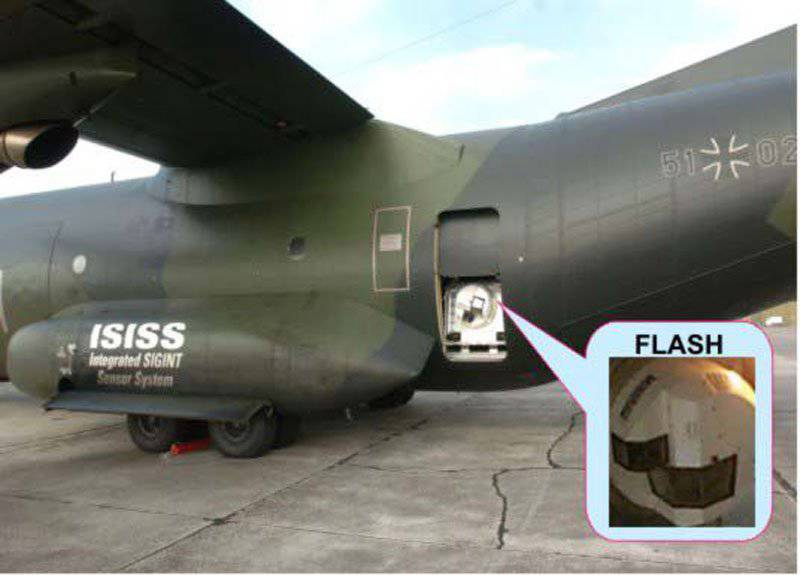
French and German companies Cassidian, Thales, Sagem and Diehl BGT Defense collaborate on a Flash demonstration program based on the Dircm experimental feedback system. Germany and France made an OCCAR program management request, but so far no decision has been made on this program.
Materials used:
Armada International 3 / 2013
http://www.cassidian.com
https://www.thalesgroup.com
http://www.sagem.com
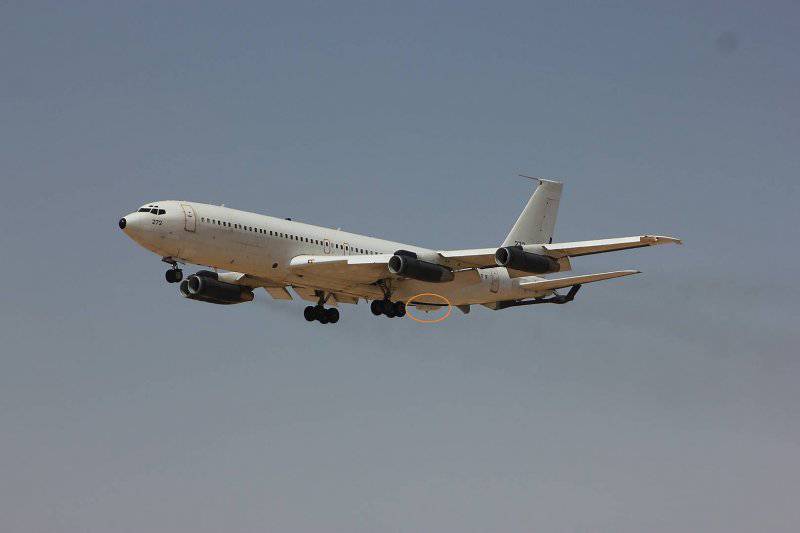
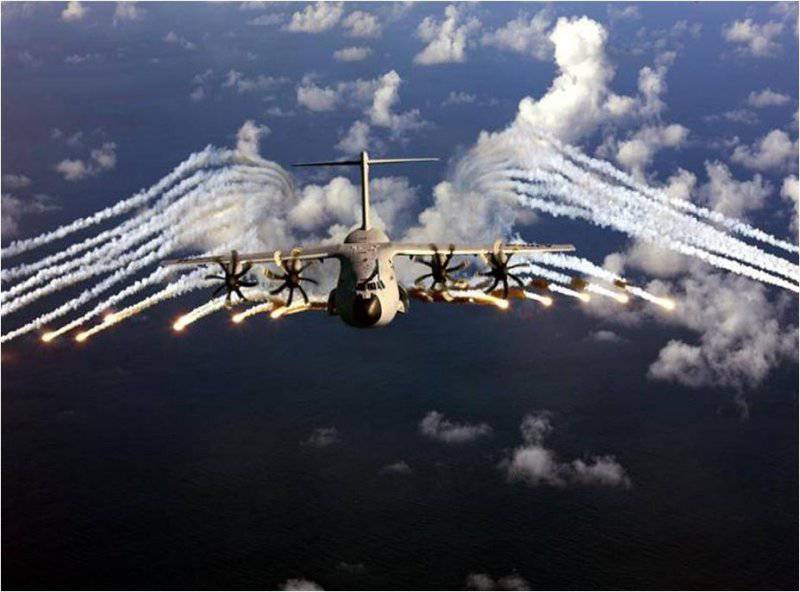
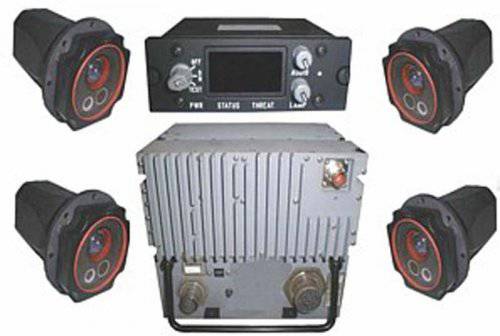
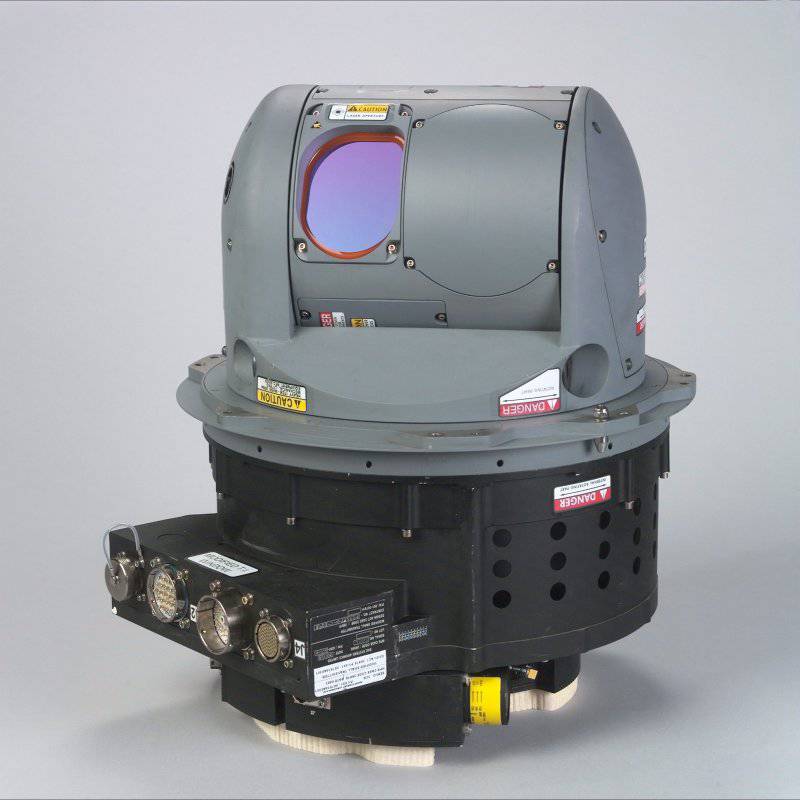
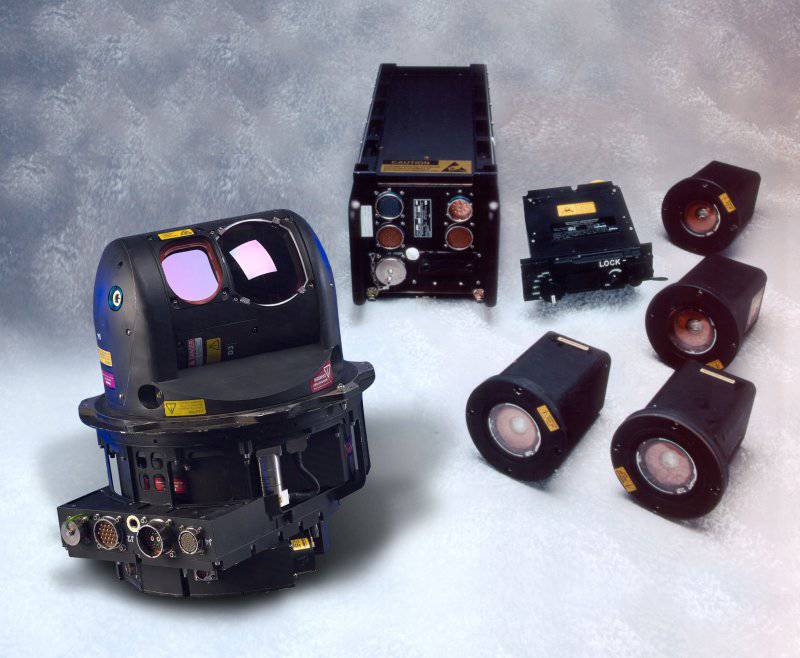
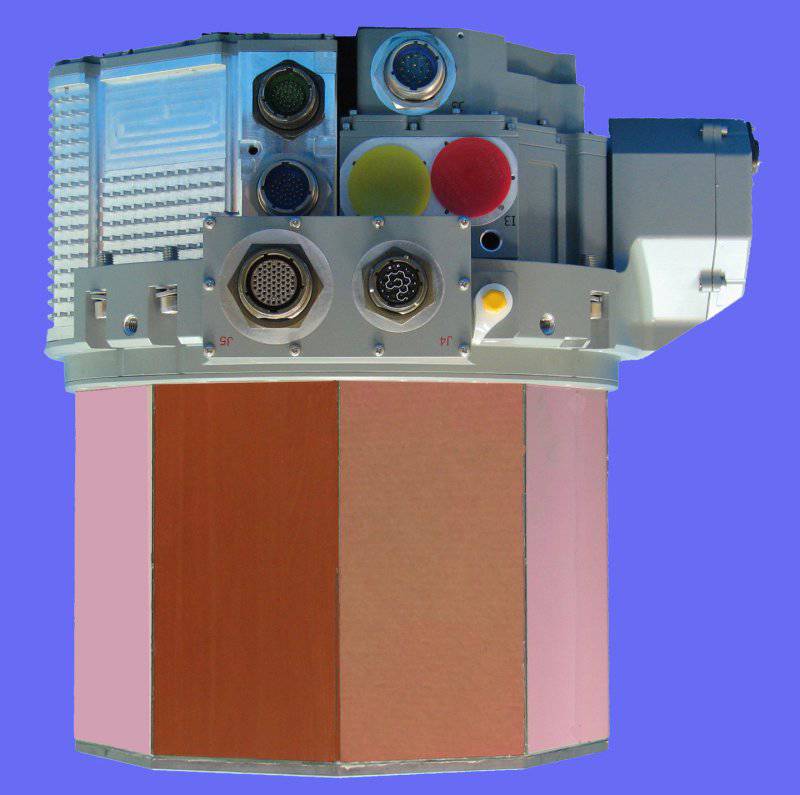
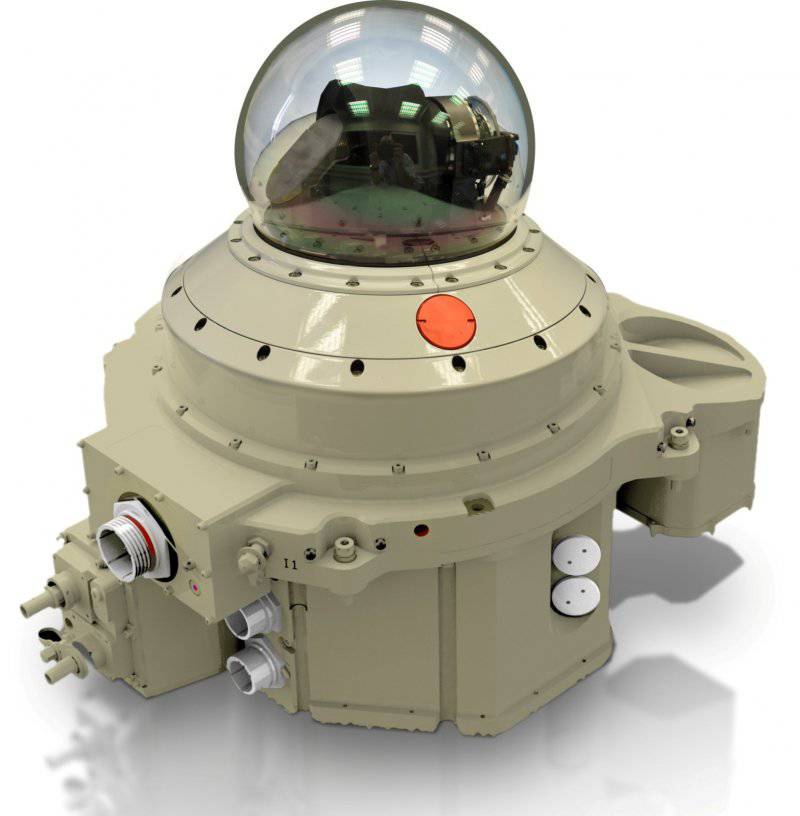
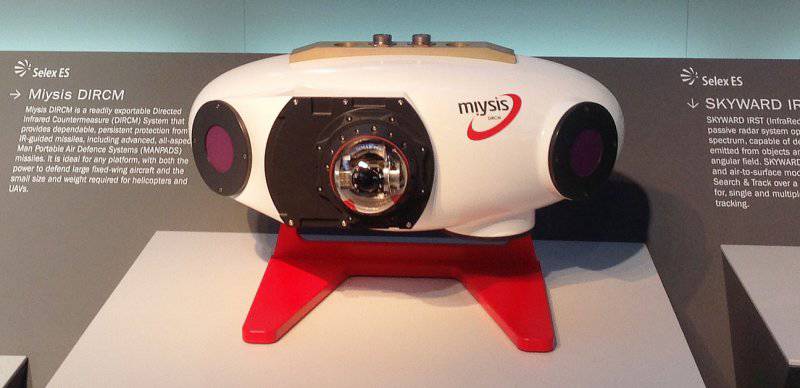
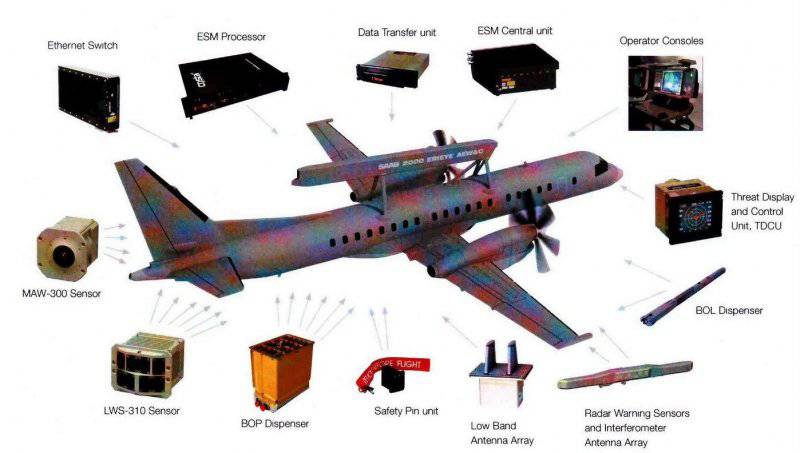
Information